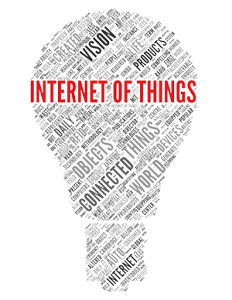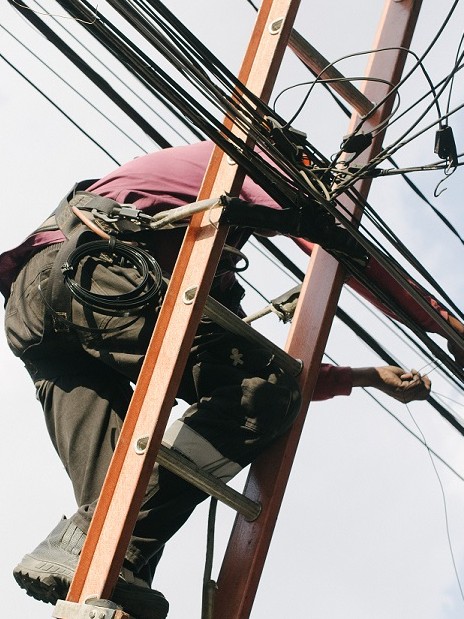Even if the IoT has focused experts’ discussions for decades, it has started to really catch our attention quite recently.
The internet of things (IoT) can be defined as the network of physical devices, in the broad sense of the term, embedded with electronics, sensors, software and network connectivity that enables those devices to collect, exchange and interpret data using analytics. In simpler words, the Internet of Things is about connecting devices over the internet, letting them interact with customers, applications, or with each other, resulting in improved efficiency, accuracy and economic benefit.
There are three main sectors of the IoT: enterprise, home, and government. The enterprise Internet of Things is the largest of the three, expecting, by 2019, to account for nearly 40% or 9.1 billion devices.
Internet of Things Uses
The number of areas where the Internet of Things plays a role is under constant growth, helped by the advances in technology, and it can and will cover almost anything we can imagine. A few examples of the endless applications of the IoT are:
Infrastructure management
Monitoring and controlling operations on all kind of infrastructures, is another key application of the Internet of Things. It can monitor any changes or events in structural conditions that can increase risk, compromising safety. Maintenance and repair activities can be scheduled in an efficient manner, guaranteeing better coordination between different service providers and users of those facilities. Usage of IoT devices in infrastructure management can improve incident management and emergency response coordination, quality of service, up-times and reduce costs of operation in all infrastructure related areas.
Medical and healthcare system
Medical may be one of the sectors where the IoT has impacted the most, with more and more health monitoring platforms for all kind of uses. For instance, they can control blood pressure, monitor the heart rate or the performance of specialized implants, such as hearing aids or pacemakers. Connected monitoring systems are already in the market, like smart-watches or fitness bands that track the steps or heartbeat while on a run, or how much Parkinson patients shake. Other application monitors daily activities of ill or senior people, watching for anomalies.
The Internet of Things allows collecting more accurate and reliable data than the traditional methods, highlighting its life-saving potential.
Energy management
Energy consumption optimization, as a general concern nowadays, is pushing into the integration of sensing and acting systems connected to the Internet able to efficiently manage energy consumption. The IoT will be integrated into all forms of energy consuming devices (switches, air conditioned, light bulbs, TVs, etc.) and will be able to communicate as well with the utility supply company in order to balance energy generation and its consumption. In fact, some systems are already in the market, allowing the users to remotely control their devices and enable advanced functions like remotely powering on or off cooling/heating systems, controlling the shades, turning on or shutting off the lights, etc.).
Advantages of the IoT
There are many benefits of incorporating IoT into businesses’ ways of working, people’s lives and the entire society, but they can be summed up in the following five main advantages:
Information availability: The Internet of Things helps to access and manage enormous amounts of data, allowing to make more informed and better decisions.
Monitoring: The IoT helps data collection and monitoring so it can further provide more information that could not have previously been collected easily.
Customer loyalty: Many companies are developing internet connected intelligence into their products in order to gain knowledge about customers’ locations, preferences, intentions, and buying patterns. Thank to the IoT, devices keep track of what customers do, view, read, or listen to as they move through their day. With that information available, companies can adapt to what their customers demand, securing their loyalty.
Time saving: The IoT is a great time-saving system. In this competitive and complex world, it facilitates gaining fast control of the changing environment and helps making the correct move in a quick and efficient way.
Money saving: it is directly related to the previous points. The possibility of knowing the customers likes and needs, accessing to reliable information instantly and monitoring the environment real time, help companies to be more competitive, to develop customer loyalty and to reduce their costs.
IoT potential issues
Even being aware of the benefits that the Internet of Things has provided so far and its expected brighter future, it has not escaped the criticism, generating some controversies as the ones explained below:
Privacy: privacy threats can be present in the IoT. Although users should be able to give informed consent to data collection, lack of time and technical knowledge can lead to give uninformed approval. Also, IoT platforms sometimes don’t pay enough attention to users’ anonymity when transmitting.
Security: The IoT has grown rapidly these past years and it continues its development at a dizzying pace. But that constant and fast evolution has raised some concerns about the level of security involved and how it can keep pace with the IoT. Therefore, security challenges and regulatory adaptation have become key points to focus on.
Intentional bricking of devices: companies can and sometimes do intentionally disable or “brick” their customers’ devices via a remote software update or by disabling a service necessary to the operation of the device. Customers should be free to point their devices to a different server or collaborate on improved software but many times they have to deal with legal impediments.
Environmental and social impact: Modern electronics are composed of a wide variety of chemicals and metals, some of them very rare. This makes them difficult to properly dispose and recycle. Furthermore, there is not only an environmental impact but also high human cost, with entire societies affected by the rare-metals smuggling.
All these potential issues are being properly addressed and fixed, so the full benefits of the Internet of Things can be enjoyed.

The IoT on business
IoT has changed the way to do business. Companies, in order to be competitive, both in local and global markets, need to keep the customers continuously engaged and be aware of their thoughts and needs, adapting rapidly to their requests to improve customers experience. This changing environment is the perfect breeding ground for innovation, focused on fulfilling the mentioned users’ needs closer and closer to real time. In summary, the Internet of Things is requiring and enabling companies to do business faster and smarter.
In the challenging “Internet of Things age”, the goal of Lime3 is to lead your organization in order to sustain safe – efficient & effective processes that meet your customers’ needs and support them.






Leave A Comment